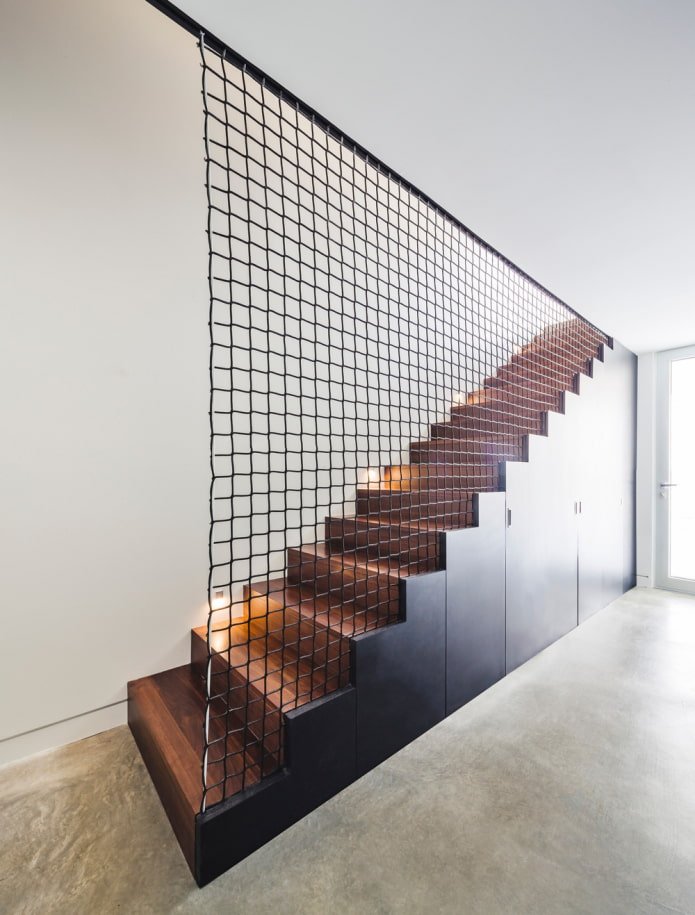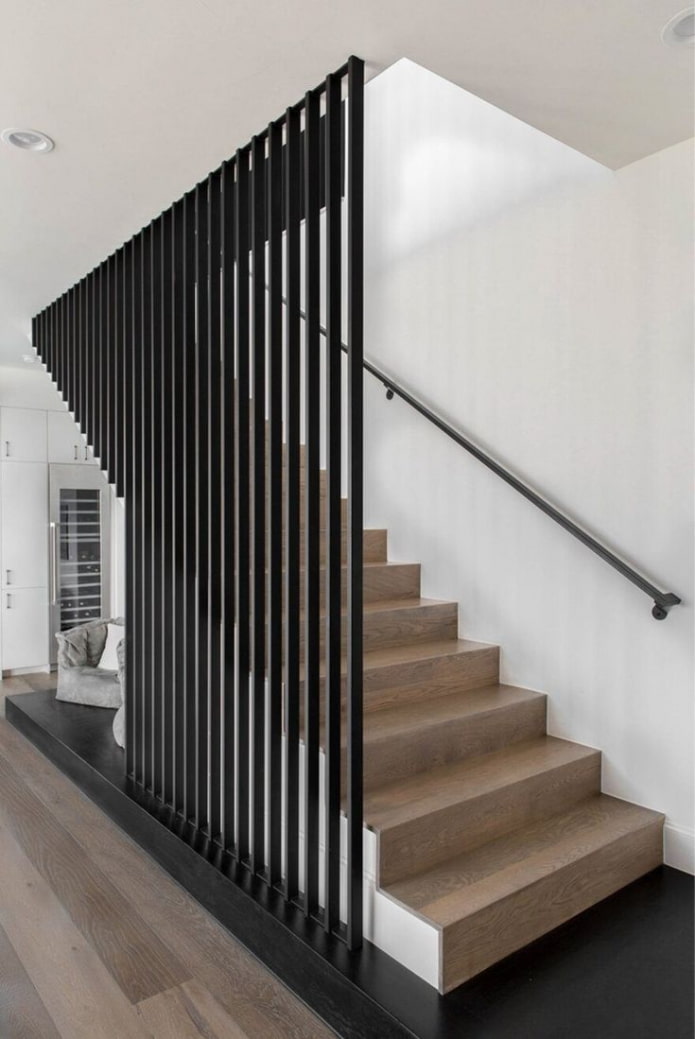What are railings made of?
The main materials used in the manufacture of stair railings are metal, wood and glass. Each of them has its own advantages and disadvantages.
Wrought iron railings
The most elegant option for stair railings. Ask the craftsman to decorate them with decorative elements and feel free to use them for a rich interior in a classic or baroque style.
The forging technique allows you to create a sophisticated design that looks lighter than bulky wooden railings. A staircase framed by such supports looks airy and does not steal space. The main thing is not to overdo it with the design.
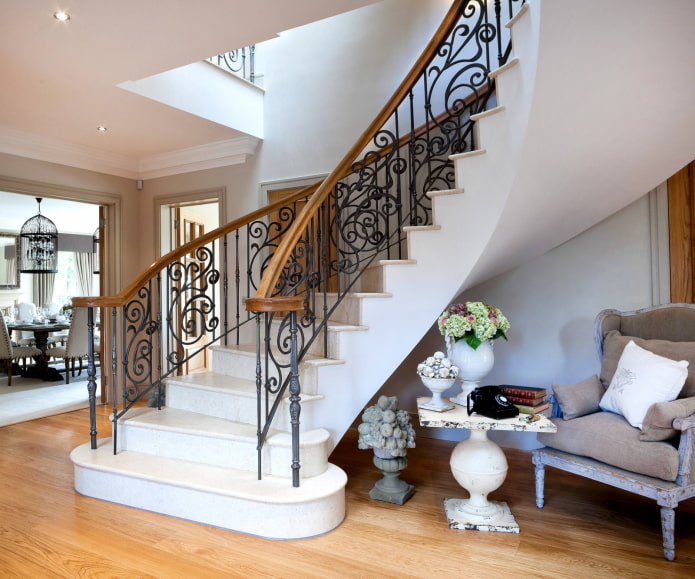
The photo shows a combination of white stone with black cast iron
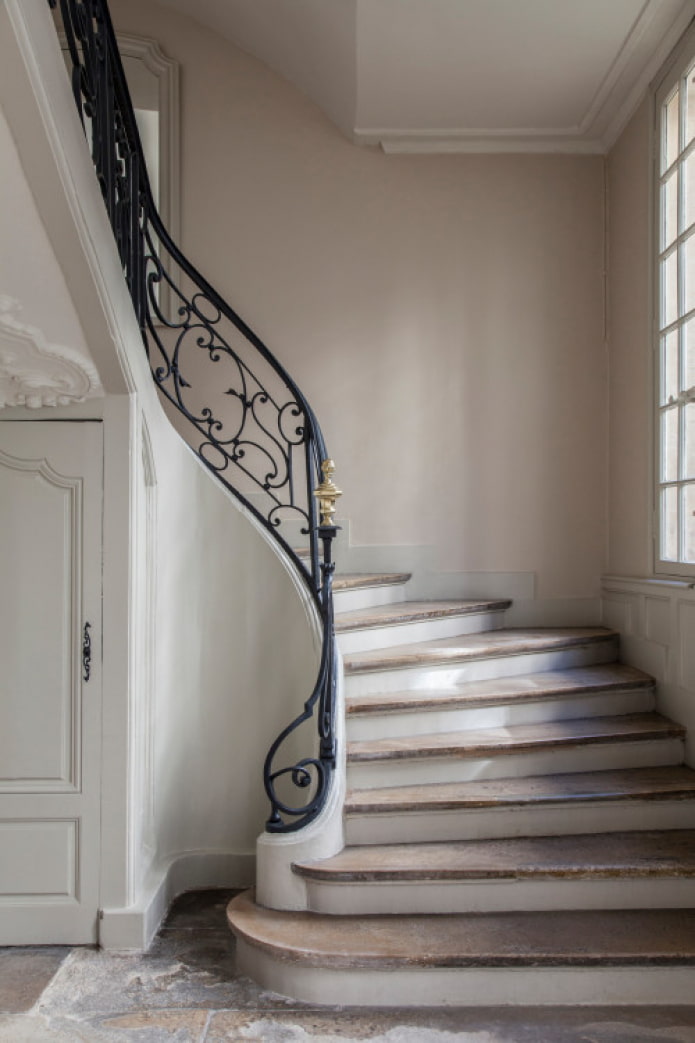
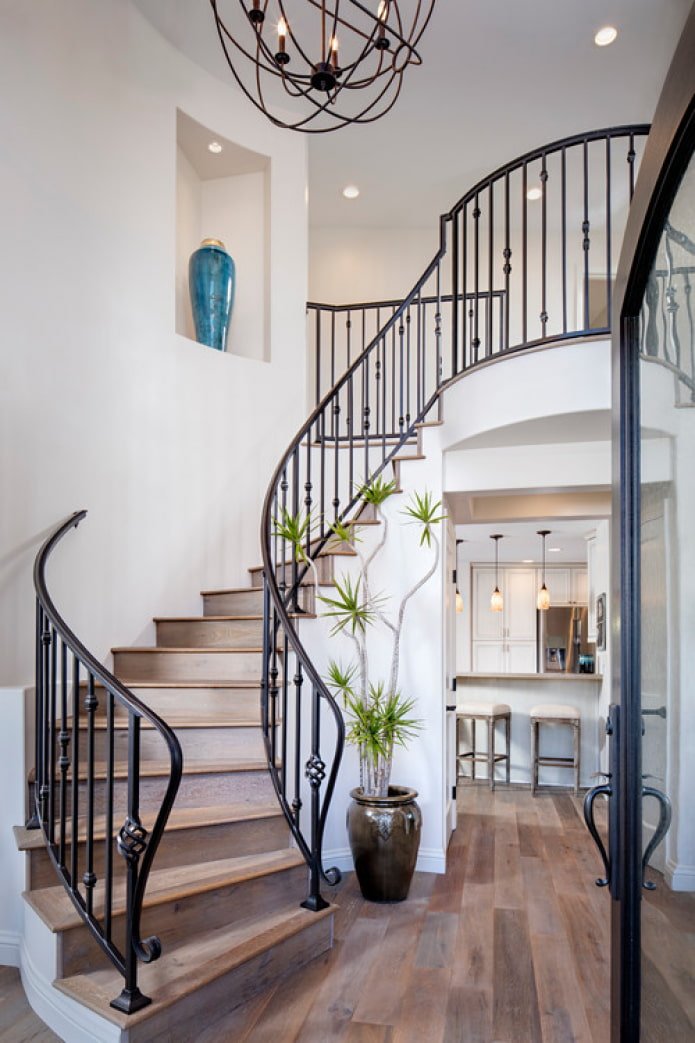
If you want to make the space even lighter, paint the metal white instead of the traditional black or dark brown. They can be decorated with gold, silver or platinum trim.
Most often, stair railings are made of:
- brass – externally shimmers with gold, looks rich;
- cast iron – classic black metal.
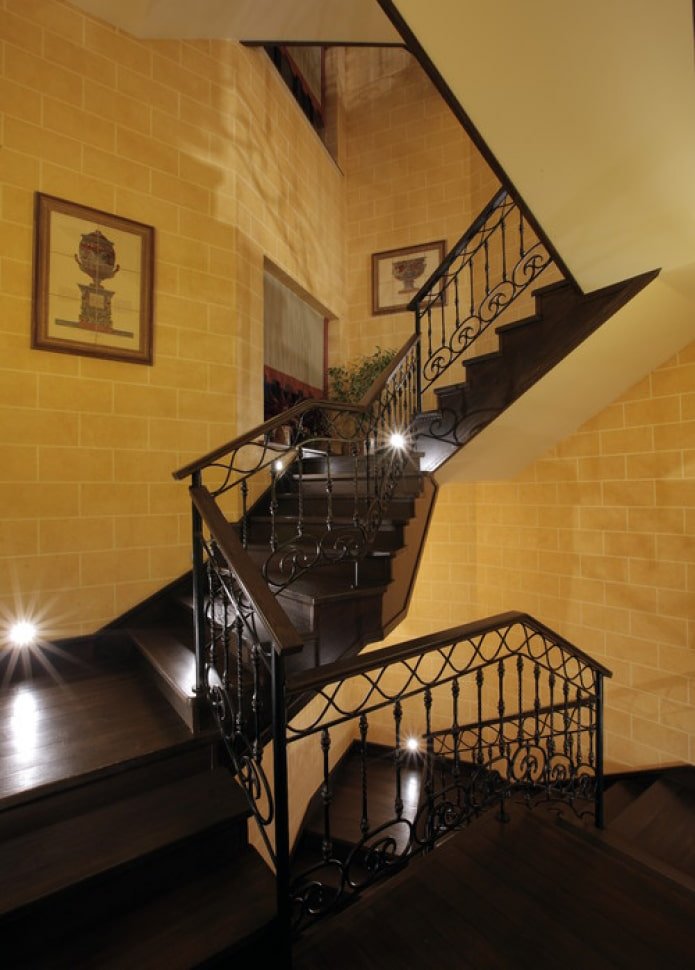
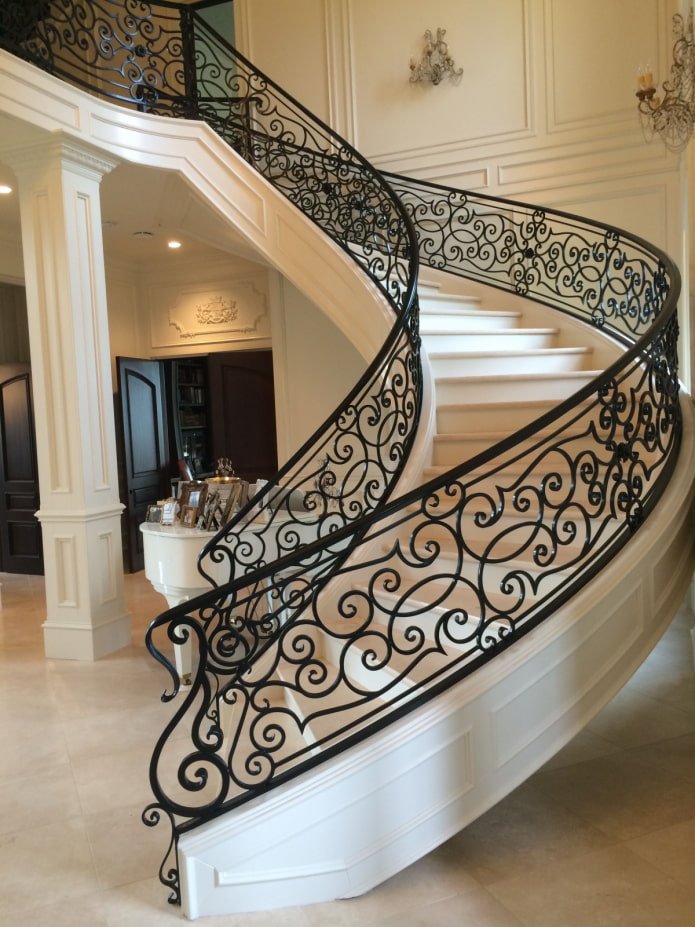
Metal railings
One Smooth metal seems pleasant to some, cold and repulsive to others. But if you close your eyes to subjective opinion, you can see the obvious advantages of stamped stair railings:
- Versatility. This applies to both style and place of use (inside or outside).
- Economy. If you compare metal and wooden railings, the former will most likely be cheaper.
- Durability. Even a thin post can withstand great pressure, and thanks to welding, you will get a single monolithic structure that is not afraid of anything.
- Durability. Any metal railings will last for decades.
- Ease of maintenance. Easy as pie – wipe regularly with a soft cloth to remove dust.
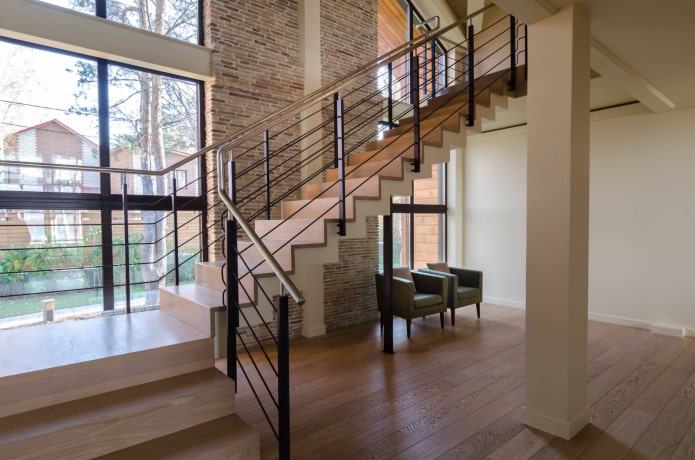
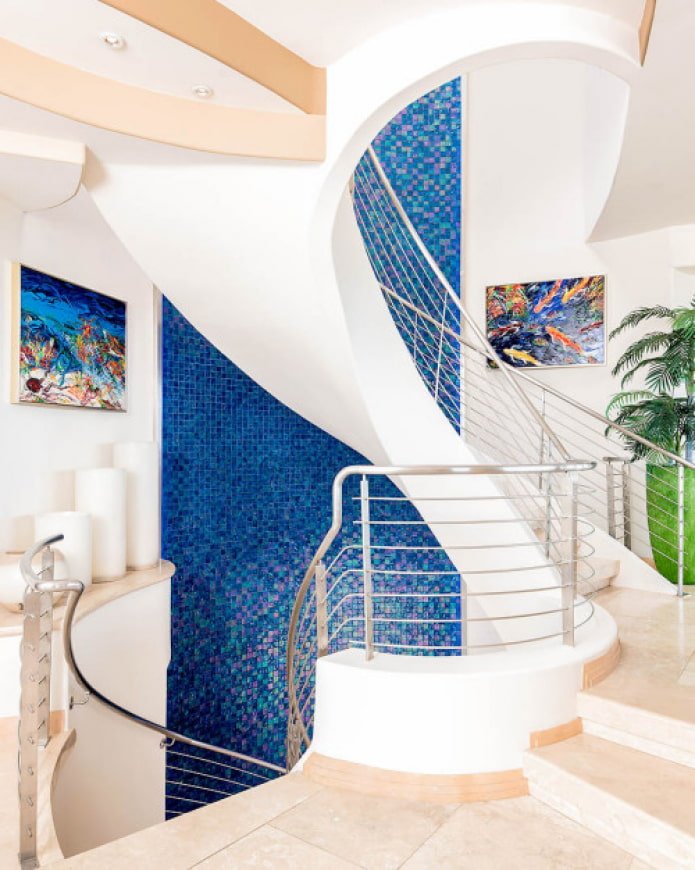
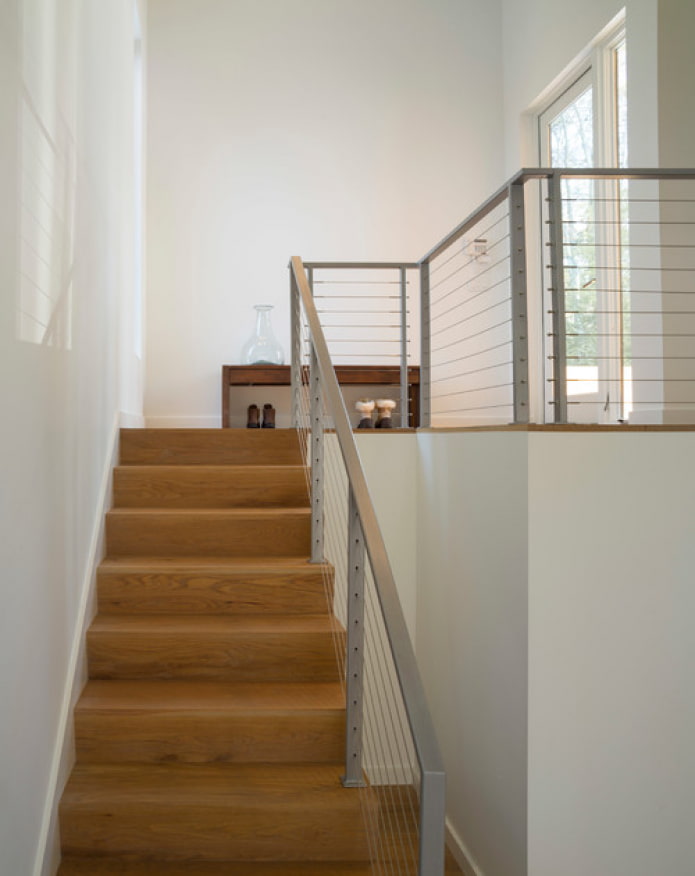
Metal railings are mainly made of durable stainless steel. steel, lightweight aluminum or heavy iron.
Most often, the color of iron railings is chrome. But if necessary, you will find options for nickel, copper, bronze, gold or platinum. Aesthetically, a stainless steel support post looks minimalist, so it is often used in modern high-tech interiors.
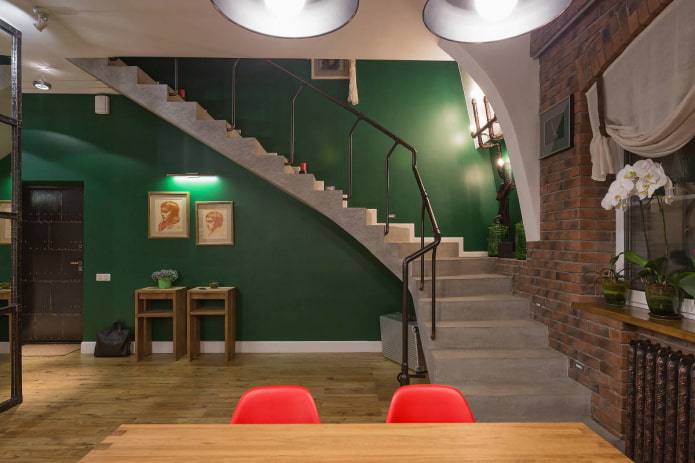
The photo shows railings made of pipes in an industrial style
Wooden railings
Wood is a warm material, its appearance alone makes a home more comfortable. Compared to other options, wood has a number of advantages:
- affordability;
- environmental friendliness;
- budget price;
- pleasant texture.
Wood can be shaped manually or on a machine into any shape: from straight and clear to beautifully curved.
The downside of wooden railings is their short lifespan. Even with a coating, they are inferior in durability to metal or tempered glass. And if you want to decorate your house with supports made of valuable wood, the repairs will definitely cost a pretty penny.
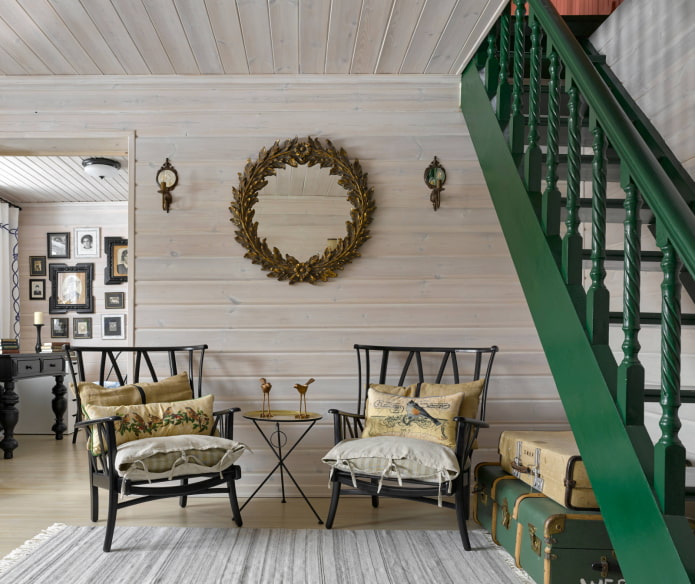
The photo shows a green architectural element as an accent
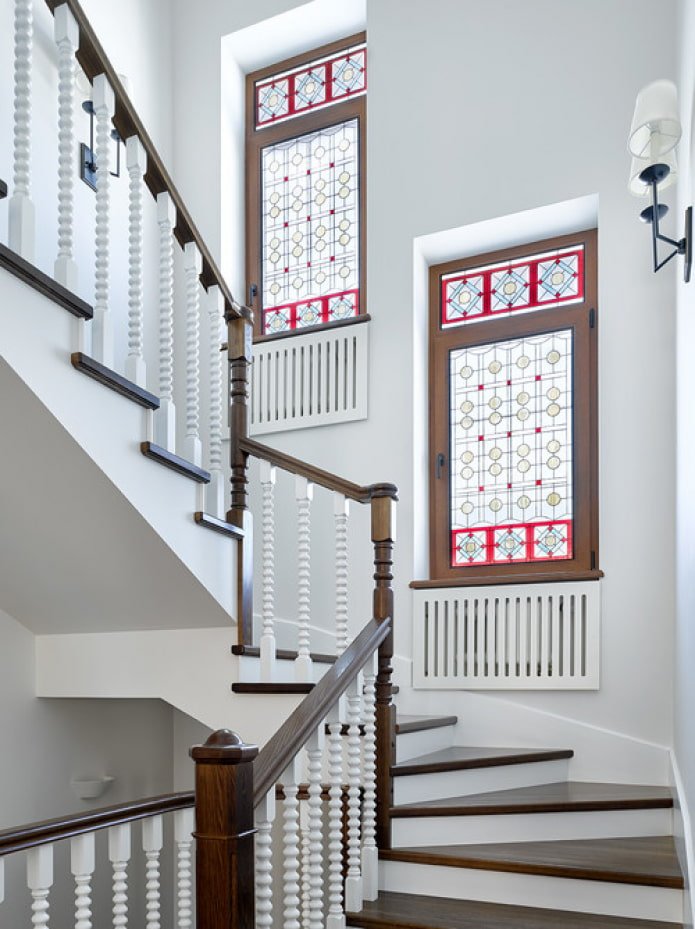
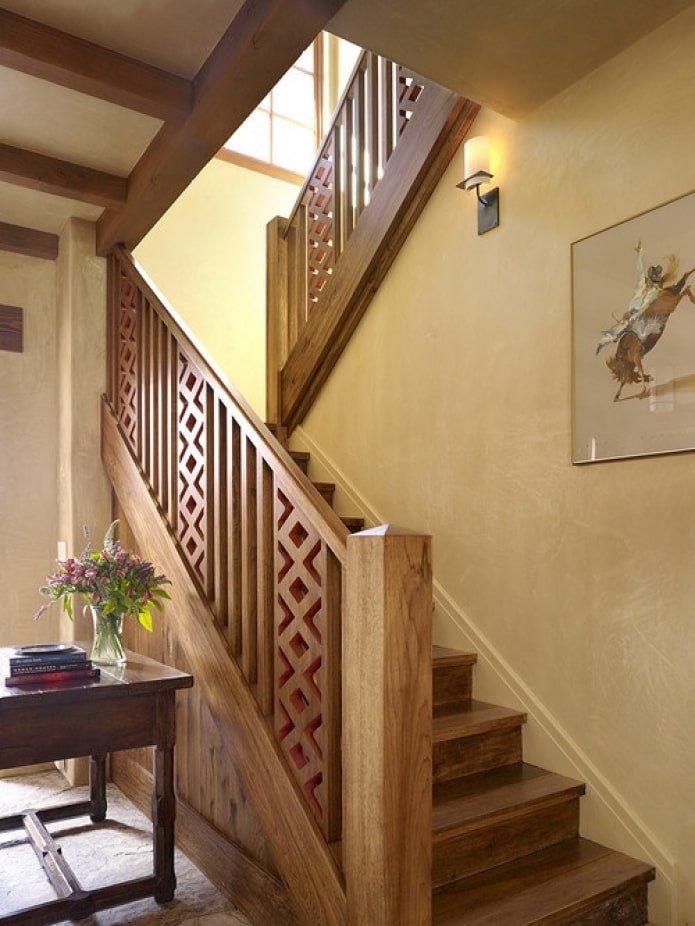
The most popular varieties:
- Pine. Cheap, but not aesthetically pleasing. Suitable for painting.
- Larch. Can be used without treatment, has a beautiful texture.
- Oak. Durable, elite, expensive material.
- Maple. Tinted is suitable for imitation of valuable species.
- Beech. Not inferior to oak in characteristics, but is cheaper.
- Alder. Not suitable for damp and very dry rooms (living room with a fireplace).
Wooden railings are most often vertical – posts from balusters and a single handrail on top. But there are also railings without balusters – their design is somewhat reminiscent of metal structures.
Another advantage of this natural material is a large selection of textures and shades even without painting. This will play into your hands if you like the texture of wood or create an interior in an eco-style. For Provence, the railings can be painted, for shabby chic – aged.
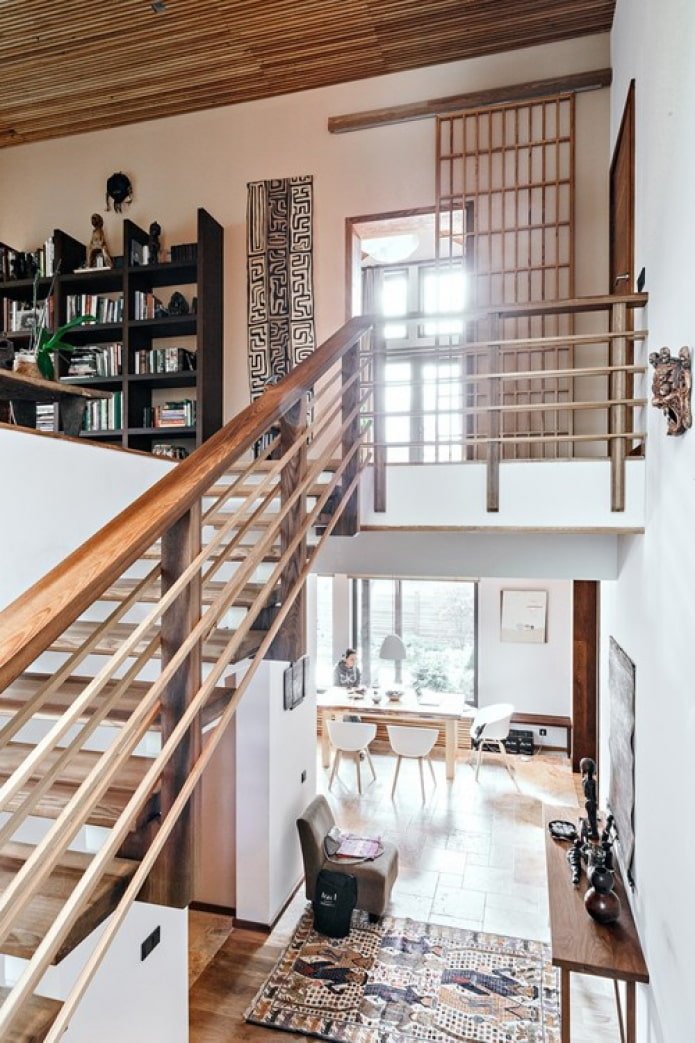
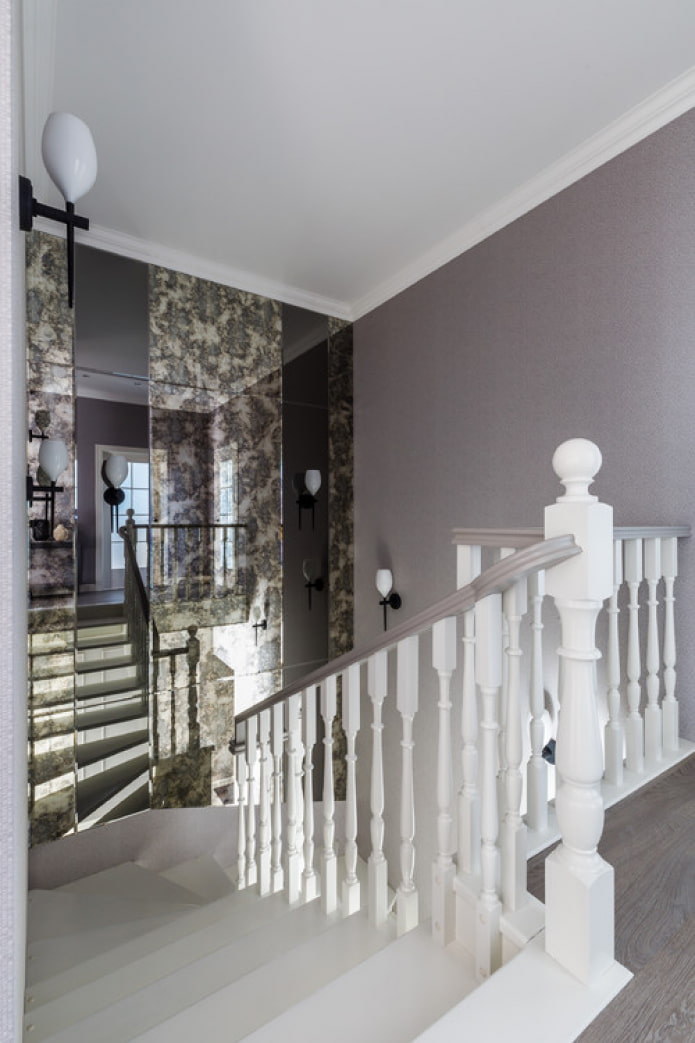
Glass railings
Glass has an obvious advantage – it is transparent. This means no feeling of clutter, as can happen with overly decorated forged railings. To maintain the transparency effect, install minimalist thin handrails without vertical beams.
If space allows, use tinted, stained or patterned glass – such an unusual design will become an amazing accent and add zest.
You don’t have to worry about impact resistance – the railings of the stair flights are made of tempered glass, so they are as reliable and safe as possible. Other advantages:
- resistance to moisture and temperature;
- environmental friendliness;
- decorative.
Glass looks best in combination with wooden steps – you get a stylish, environmentally friendly tandem.
A more economical alternative to glass is thick plastic. PVC panels look almost the same as glass and are more expensive. But they have a lot of disadvantages, such as being non-environmentally friendly and easily damaged. With frequent use, the railings will quickly become scratched and lose their attractive appearance.
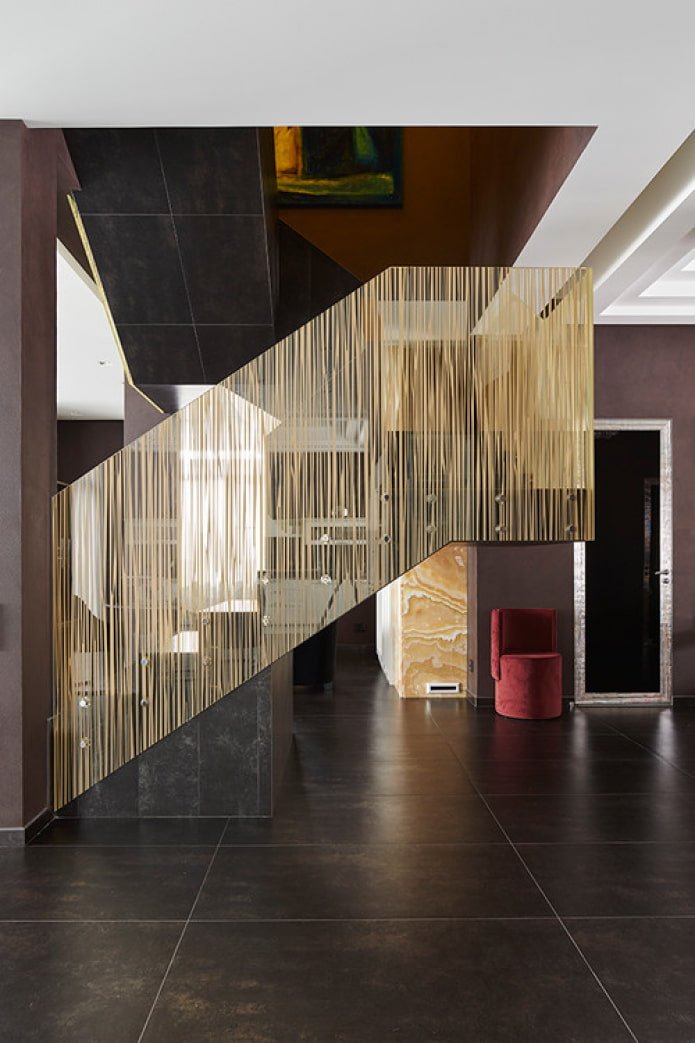
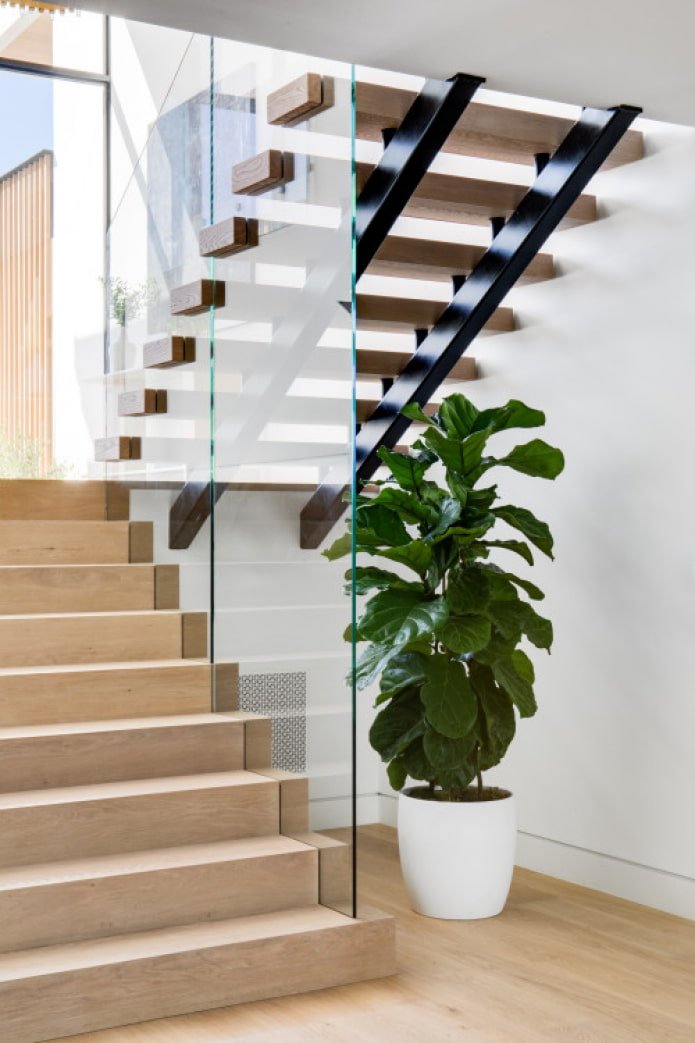
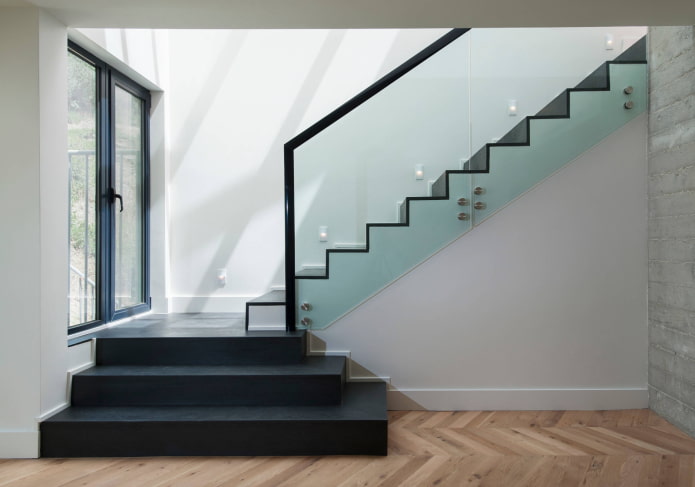
Combined
Railings for stairs made of several materials are more practical, more reliable, and safer than others. For example, if you put a wooden handrail on top of metal supports, it will be much more pleasant to hold on to them.
Another duet is glass and metal. Glass panels are complemented by stainless steel handrails, which makes the structure safer.
The third combination is wood and glass. As in the previous version, glass acts as pillars, and wood acts as handrails. It is good if these materials are also actively used in the interior.
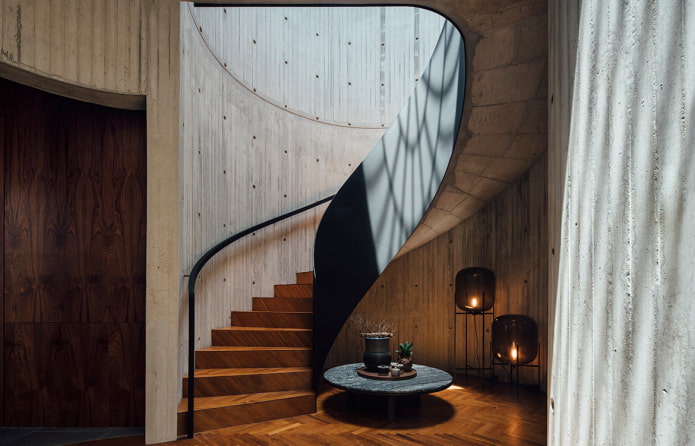
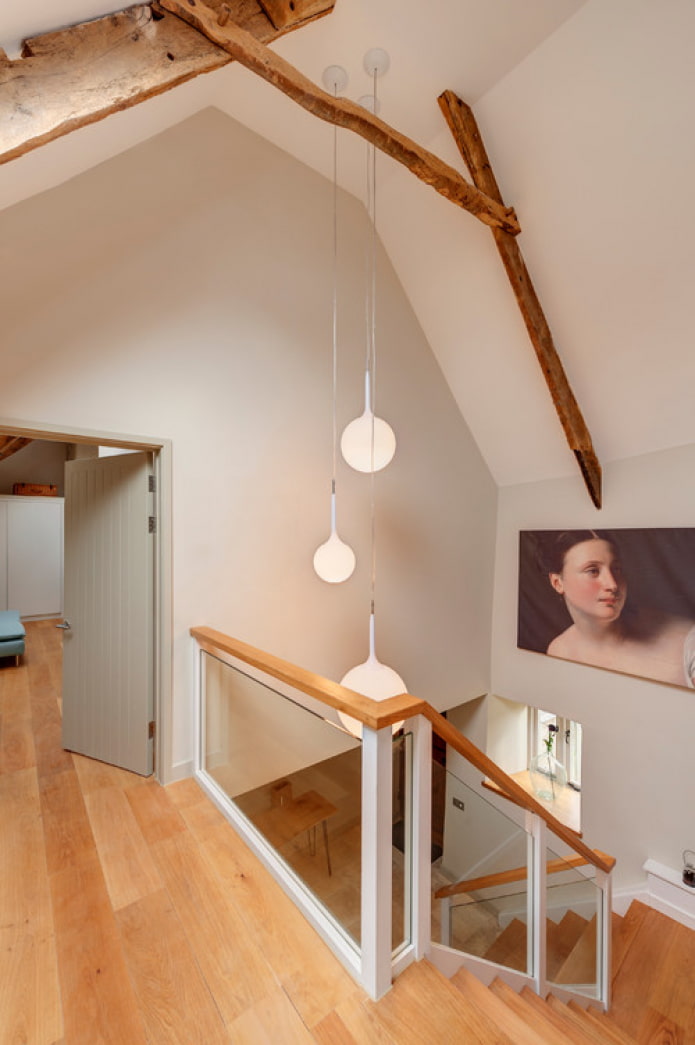
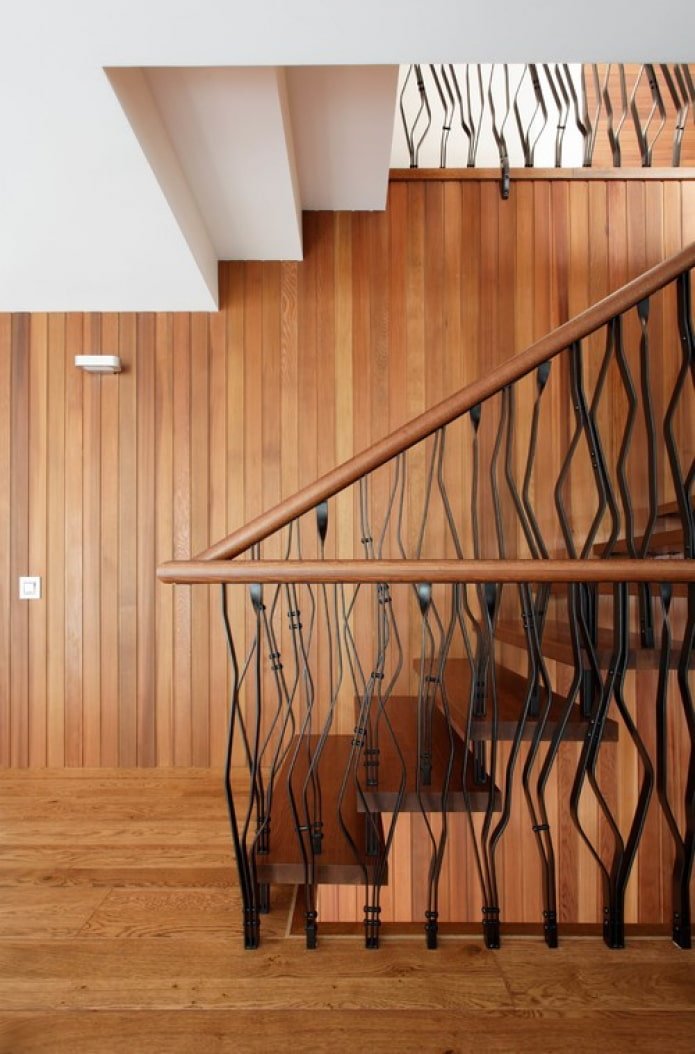
There are also combinations of not two, but three materials: wooden handrails, metal supports, glass screens between them.

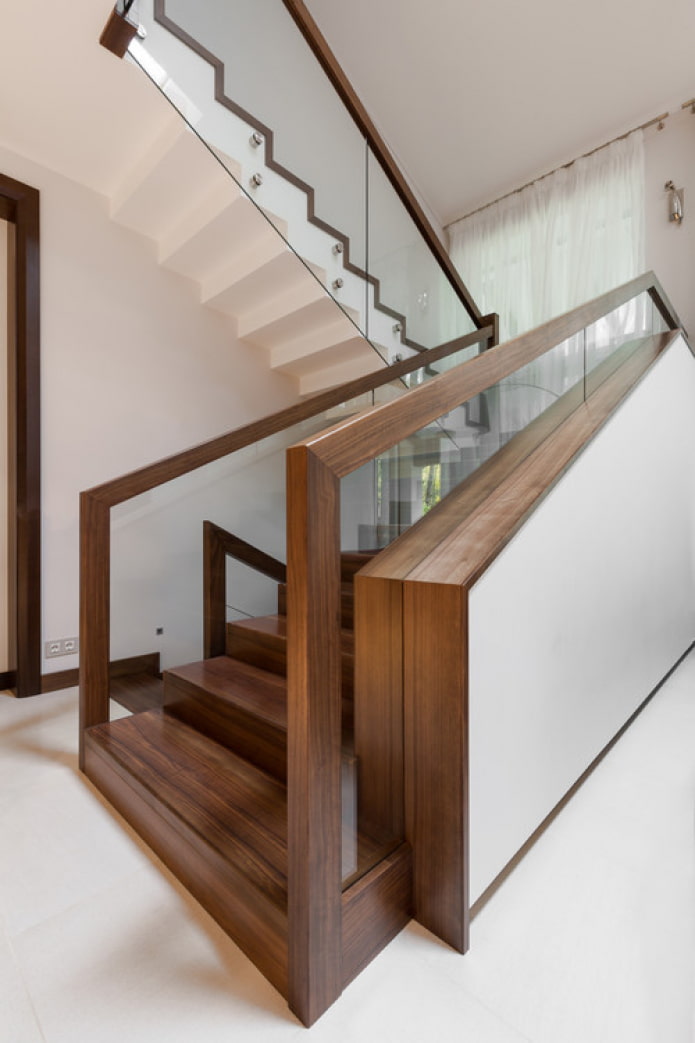
How to choose railings according to the shape of the staircase?
In terms of location, size and design, stairs can be completely different, accordingly they will need different railings.
Location:
- Closed. The steps are sandwiched between the walls, making the climb absolutely safe and eliminating the need for railings at all. However, if there are children or elderly people in the house, run a handrail along the wall (one is enough for a width of up to a meter, more – it is necessary to install on both sides).
- Open. It is not safe to go down such steps, so be sure to install posts and railings on both sides. To visually preserve, use only solid glass screens as protective barriers.
Size:
- Small. Even an open rise of 3-4 steps (it happens when there is a difference in the level of the apartment) is safe without additional support, so you can save on railings for the stairs.
- Large. Forged or other railings are a must for an open structure. In a closed one, start from the number of steps – it will probably be difficult to climb high without help and you will need handrails.
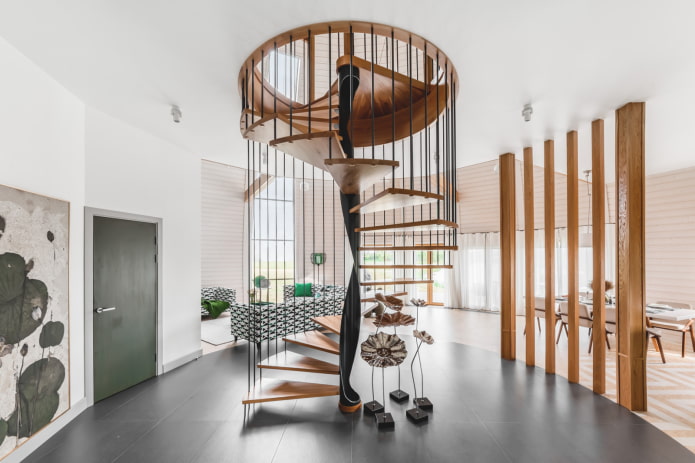
The photo shows a spiral air staircase
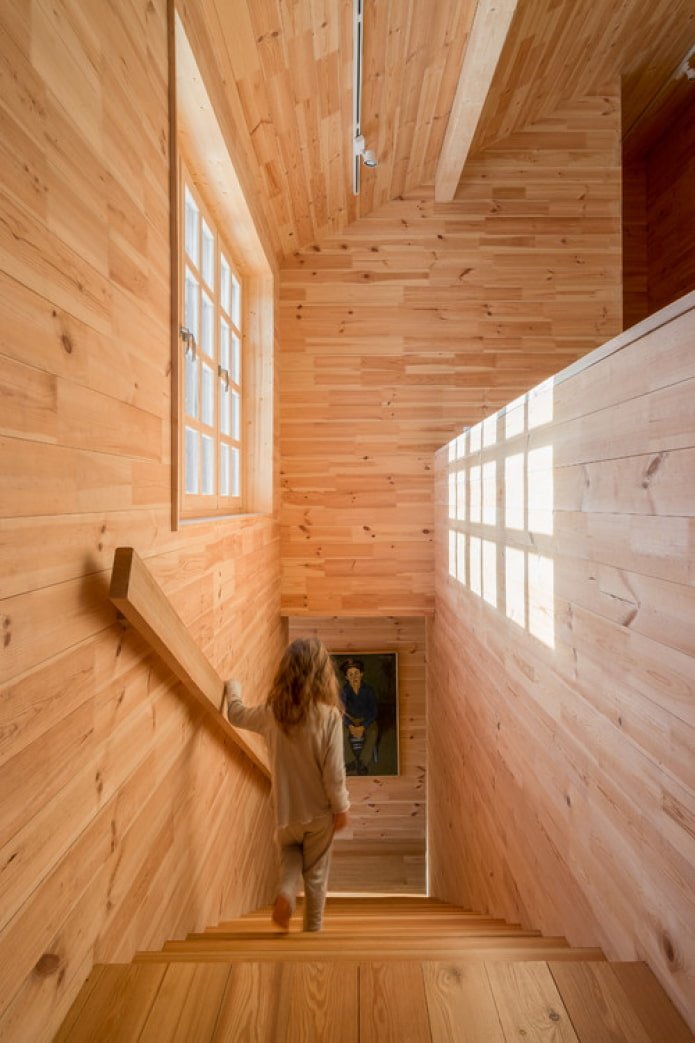
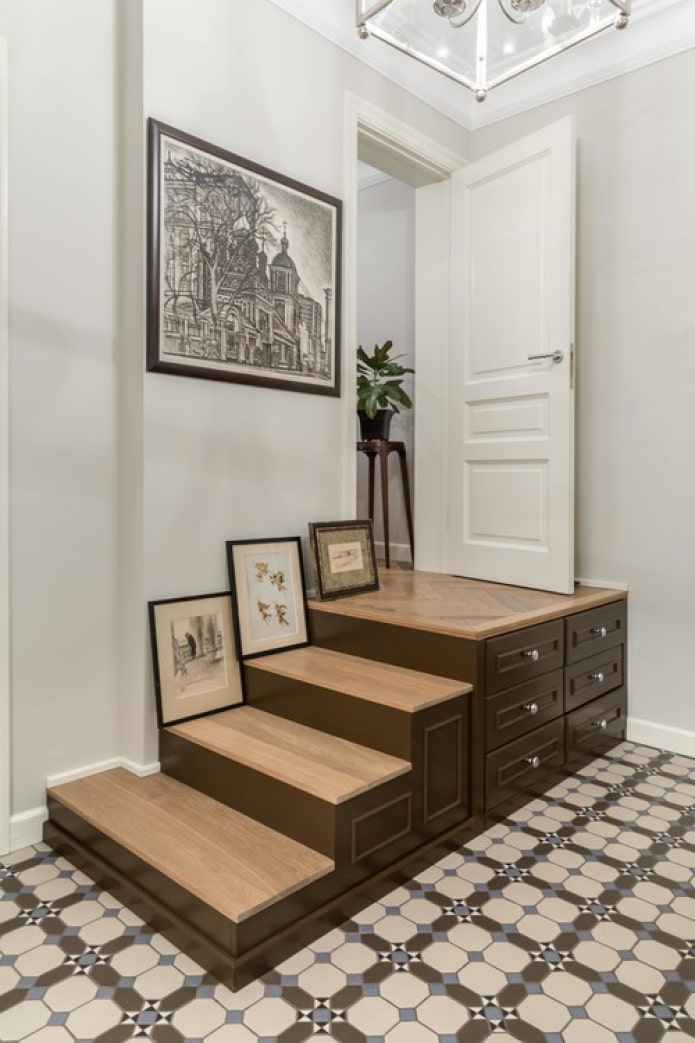
Form:
- Straight. When deciding whether you need railings for stairs, consider the open or closed type. There is also a semi-closed type – when there is a wall on one side. In this case, if the stairs are wide but flat, you can do without railings in favor of a railing along the wall.
- Spiral. If there are no walls around, be sure to make high barriers, otherwise it will be unsafe to go up and down. If the staircase is closed or angular, a pole in the center of the structure is enough – it is convenient to hold on to it during the descent or ascent.
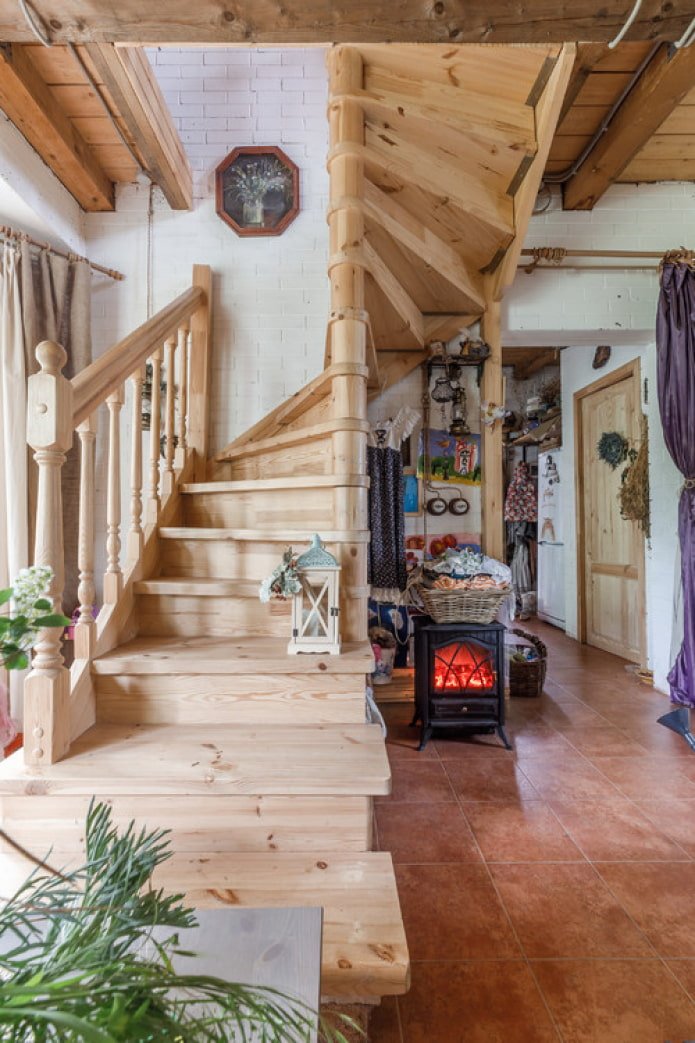
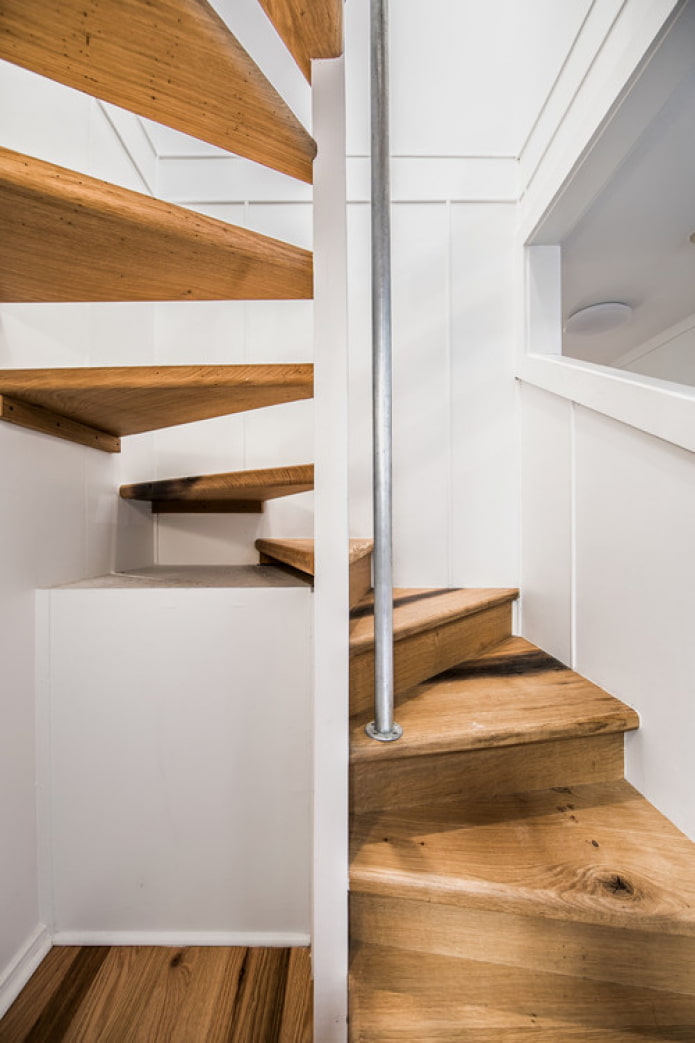
Design options in a private house
Railings for stairs are selected in accordance with the style of the interior. Main directions:
- Classic. Usually, cast iron forged elements are used, but neat carved wooden balusters will do as well.
- Modern classic. A reliable variation is a concrete or brick parapet with a wooden handrail. Or any other material in a minimalist design. Glass will fit in well.
- Scandinavian style. The standard combination is red with white. Racks made of white plastic, metal, wood, stairs and handrails – natural wood.
- Loft. The best solution is metal in any form. Pipes, cables, fittings, sheets. No decor is required, such railings for stairs will become an accent anyway.
- Provence. The best place for solid, preferably wooden buildings. In this case, it is better to cover the surface with any light paint.
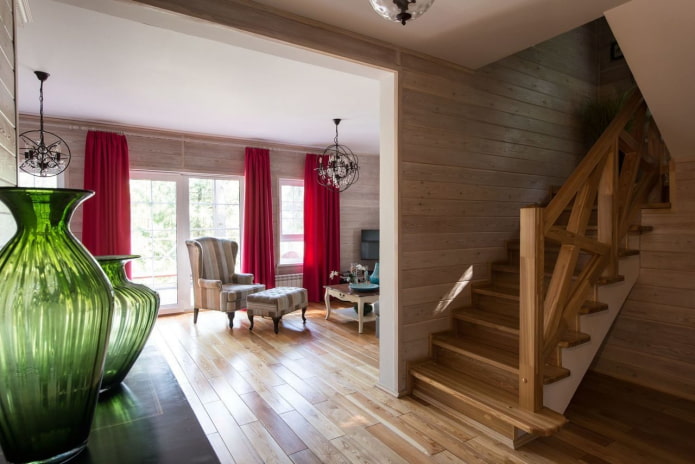
The photo shows wooden decor of the house
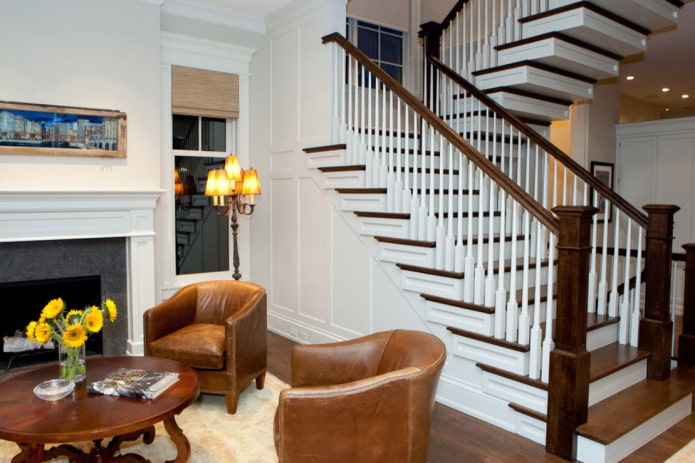
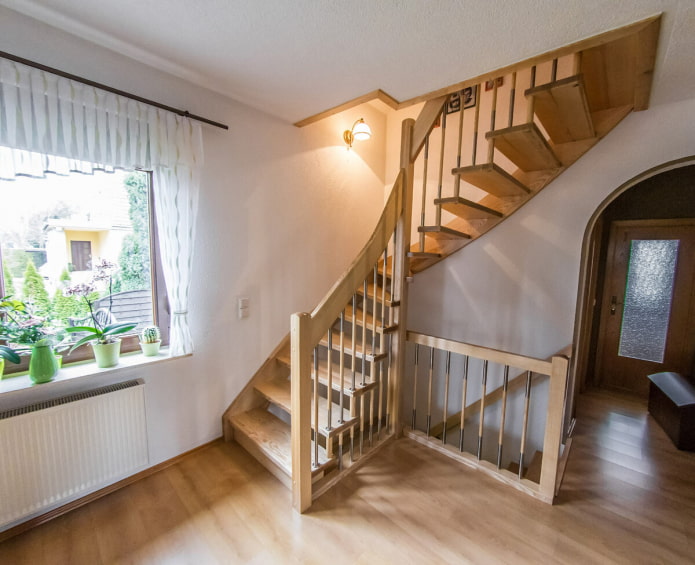
The only thing more important than beauty is ease of use. In order not to make a mistake with a home staircase when designing a country house, remember the following numbers:
- end with a landing every 10-12 steps, otherwise it will be difficult to climb without rest;
- lay a width of 90-100 cm, especially if there are a lot of people in the house – otherwise it will not be possible to pass someone coming the other way;
- do not make the angle of the structure more than 45 degrees.
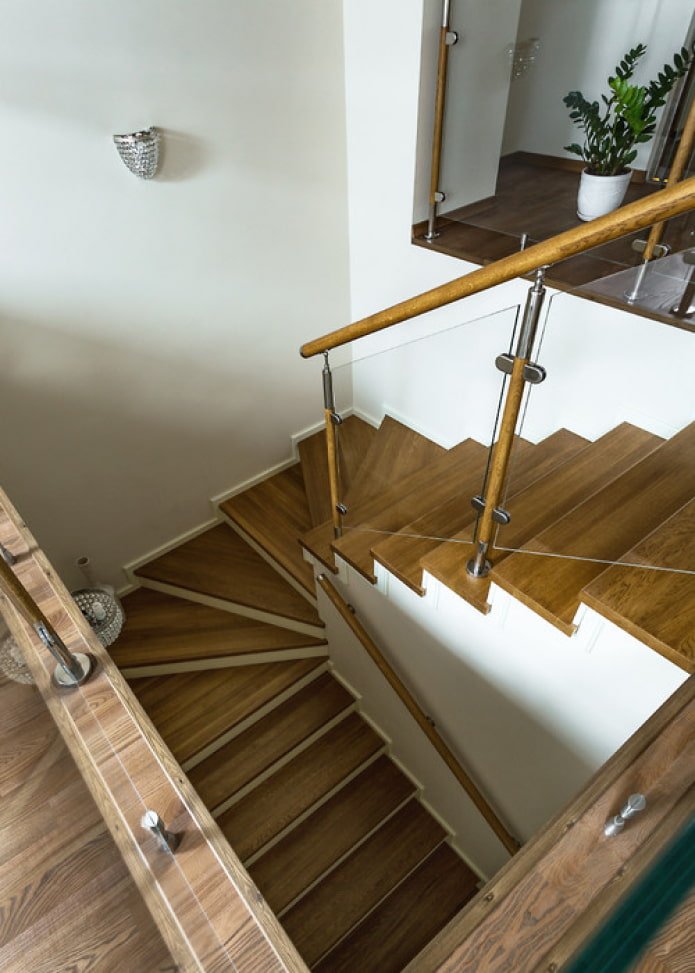
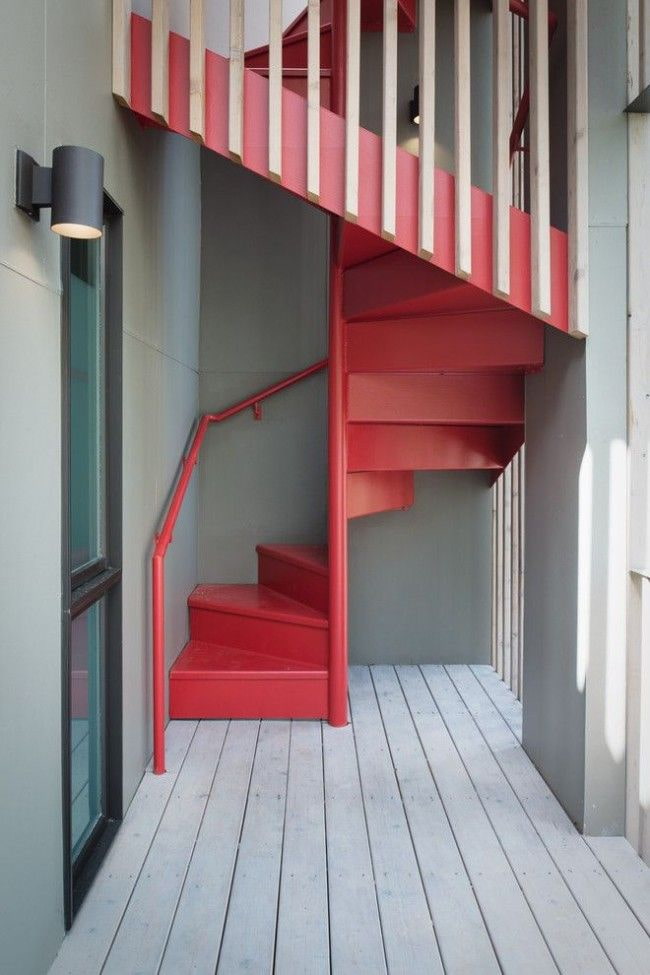
A selection of unusual ideas
Simple railings for stairs will not surprise anyone anymore, we have selected several fresh interesting ideas:
- Thin strings from floor to ceiling instead of walls. They are replaced with flat slats, ropes. This option cannot be called railings, rather a protective fence – it makes movement safer without interfering with the flow of light.
- Modern metal products. No more plant motifs in the form of forged flowers or bunches of grapes. Only straight, clear lines intertwined with each other.

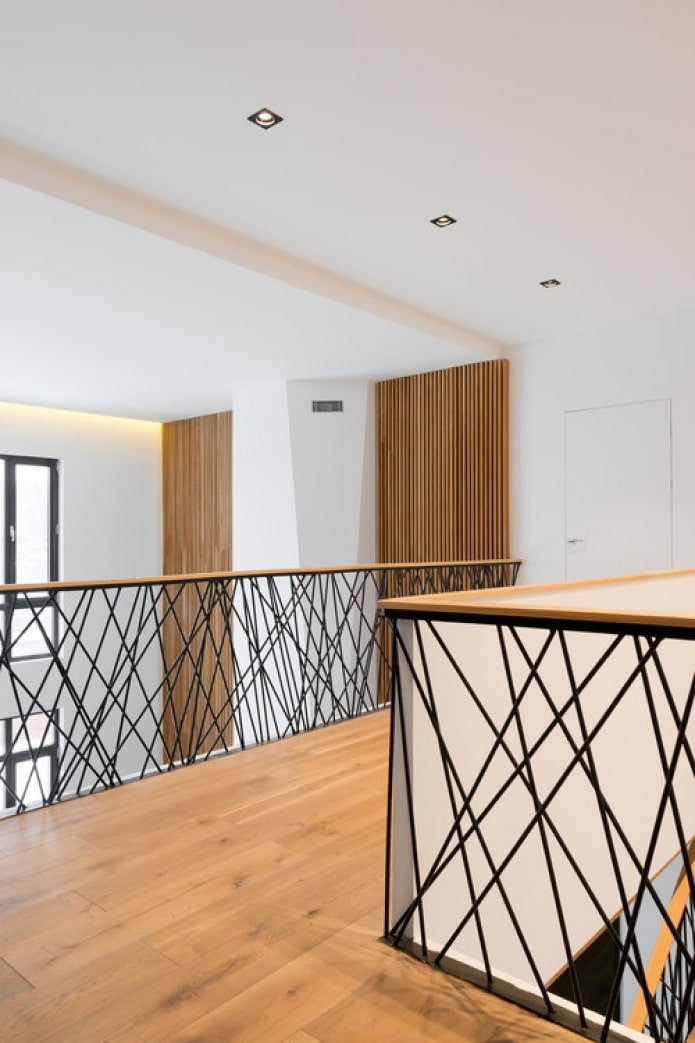
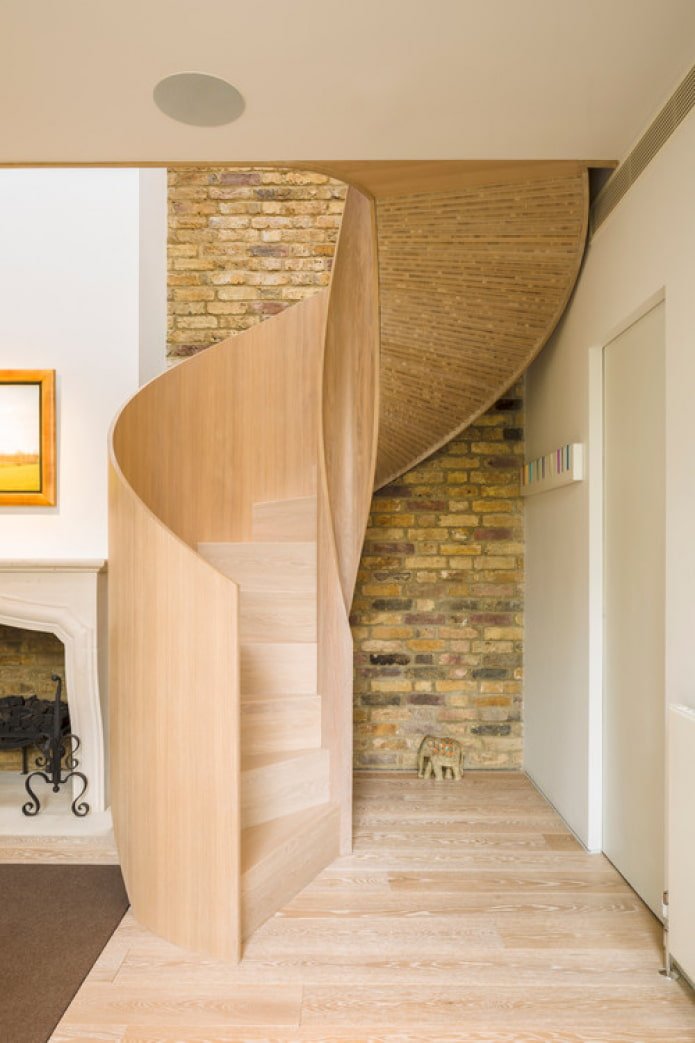
- Blind fencing. Railings do not necessarily consist of balusters and handrails, they can be made of solid PVC, metal or glass.
- Mesh. This method is similar to the first. Such fencing is not so much a support as protection from injuries and falls. Small gaps will also protect property from falls from the stairs. The advantage of a mesh ceiling is that light penetrates through the cells. And it can also be used to place live or artificial flowers and other decor.
